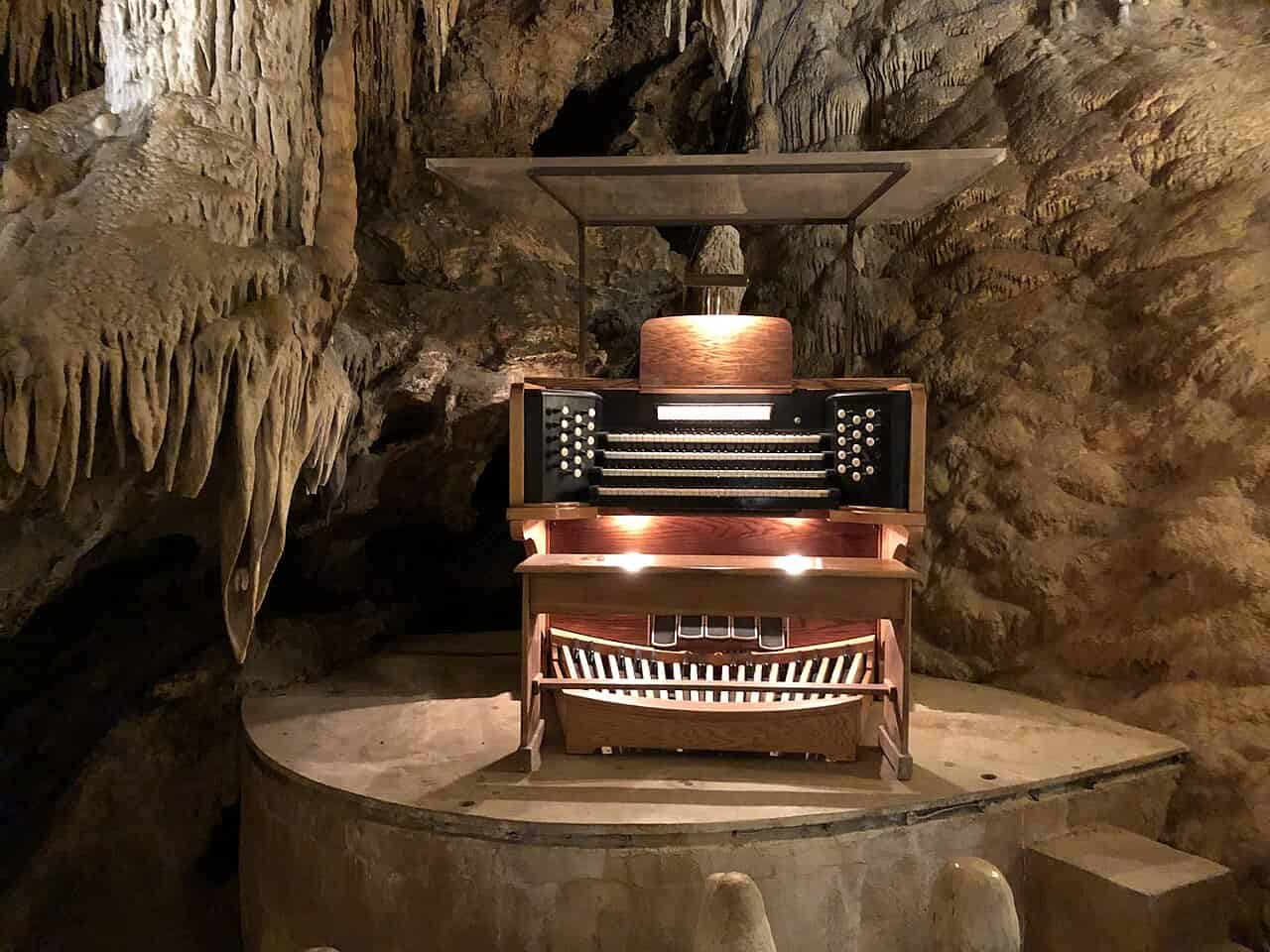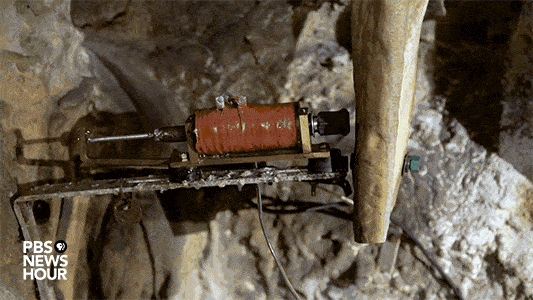
Nestled in the rolling mountains of Northern Virginia, Luray Caverns is known as the largest cave system in the eastern United States. These caverns draw hundreds of thousands of visitors annually. Yet, it’s not just their size that captivates. Inside these caverns lies a unique marvel: the world’s largest musical instrument — an organ made of stone stretching over 3.5 acres.
A geological musical instrument
At the core of these subterranean wonders is The Great Stalacpipe Organ, situated in a chamber fittingly named ‘The Cathedral.’ The organ stretches over 3.5 acres but can be heard over all 64 acres of the caverns’ interior.
Despite what its name suggests, it operates more like a percussion instrument. Each key triggers a soft hammer that gently strikes a stalactite, producing ethereal tones that echo through the caverns. The resulting tone sounds a bit like a xylophone — one that resonates with geological history.
Enough talking though. Here’s what the mesmerizing Great Stalacpipe Organ sounds like when it plays Beethoven’s fitting Moonlight Sonata.
Or this haunting rendition of Für Elise.
Nature’s Tuning Forks
The story of the Luray Caverns begins over 400 million years ago when the Appalachian Mountains, home to the cave system, emerged from the depths of an ancient sea. Geological forces shaped a thick dolomite limestone structure that formed the foundation of today’s “Cave Hill”, as the site is known to the locals.
In time, the limestone was carved by acidified rainwater that slowly seeped through the ground above, giving rise to the famous giant caverns. In stage two, calcium carbonate-rich water slowly dripping from the cave’s roof eventually formed stalactites, the icicle-shaped deposits that hang from the cavern’s ceilings, and stalagmites, the corresponding formations that rise from the cave floor.
Since Luray Caverns were discovered more than 150 years ago, many people have visited this magical cave. But it was in 1954 that the caverns’ musical potential was unleashed. That fateful year, Pentagon electronics engineer and mathematician Leland Sprinkle was enchanted when the guide tapped differently sized stalactites to demonstrate how they would produce different tones.
That’s when Sprinkle, who was also a hobbyist musician, got this wild idea: What if these natural resonators could be turned into a cave-sized musical instrument? Over three years, the engineer found 37 stalactites of just the right size and density that could produce a range of pitches found on a piano keyboard. To produce tones, adjacent rubber mallets strike the stalactites, controlled by a console resembling an upright piano.

When the musician presses a key, an electrical signal travels down long wires, triggering the mallet. Some of the stalactites are so far away from the operating musician that it can take a full second between pressing a key and when the sound reaches the organist. This is why Luray Caverns isn’t just the world’s largest musical instrument, it’s perhaps one of the hardest to play too.
The musician needs to sync perfectly with the unique delay for each key press owed to the caverns’ highly variable reverberance. Nowadays, if you listen to a concern at the Luray Caverns, it is most likely played by a machine similar to a player piano which automatically times pressing the keys with the natural acoustics of the chamber.
In the organ’s damp cave environment, meticulous maintenance is key. Heaters and dryers protect the delicate console and mechanics, while the strategic selection of dry, stable stalactites reduces the need for frequent tuning.
Today, more than six decades after its conception, the Great Stalacpipe Organ captivates over 400,000 visitors yearly with its geological and musical story. The organ’s melodies intertwine with the stunning visuals of golden rock formations, crystalline limestone, and serene pools of water, crafting an almost surreal atmosphere. Some visitors compare the experience to the image of a submerged, petrified city.
Other similar musical instruments consisting of rock, or lithophones, including the ones at Tenkasi in South India, and at Ringing Rocks Park in Pennsylvania.






